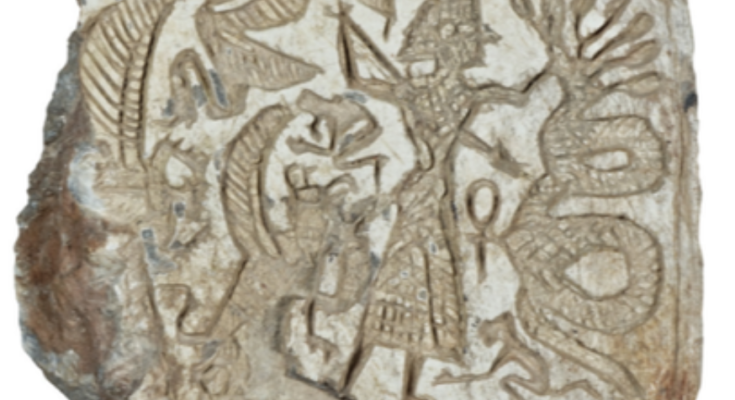A small 2,800-year-old stone seal depicting Hercules, discovered in the highlands of northern Israel, may be a ‘missing link’ in the evolution of a common motif that appears in the Bible and Greek mythology, according to a new study.
The “spectacular” artifact “occupies a special place in this long and largely unknown history of myth transmission,” Christoph Uehlinger, the study author and professor in comparative religion at the University of Zurich wrote.
The Hercules seal was discovered during an archaeological excavation in Tel Hazor in 2022, and depicts an intense battle sequence involving a human figure wielding a spear facing up to a seven-headed serpent, Uehlinger said. A griffin, scarab, and a pair of monkeys are also visible on the edges of the scene.
The item is around 4cm long, and dates back to around 800/750 BC. It is believed to have been crafted by either an Israelite or a Phoenician – people who occupied the nearby area of the Levant.
How the ‘Hercules Seal’ Evolved Over the Centuries
The image of a hero fighting with a seven-headed serpent is much older than the Hercules seal itself, first appearing around 2,500 BC in Mesopotamia, part of modern-day Iraq. It is thought that the motif then spread from there, resurfacing in ancient texts from modern-day Syria, where it found its way into the Hebrew bible.
In Israel, the hero figure was known as Yahweh – the Hebrew name for divine – who was fighting a leviathan, Uehlinger said.
Hundreds of years later, it appeared in the Christian Bible, with the mythical serpent battling an angel in the book of revelation. The same image then cropped up in Greek mythology in the form of Herakles (Hercules in ancient Rome) locked in combat with a Hydra, a multiple-headed serpent beast.
The common appearance of this depiction, with its slight variations, has puzzled researchers for some time, with nobody being certain about the image’s proliferation during the first and second millennia BC.
However, this newly-discovered Hercules seal from Hazor “provides a tangible link from Phoenicia to Israel,” Uehlinger told McClatchy News in an email, as reported by the Miami Herald. It also supports one thesis that the motif traveled from Ugarity in norther Syria through Phoenicia to Israel.
“Phoenician scribes/scholars probably preserved and transmitted the tradition they may had inherited from Ugarit (an ancient city in Syria) since the Late Bronze age,” Uehlinger said.
Adding that the mechanism by which the motif spread to the west and became part of the Hercules myth, remains unknown.



